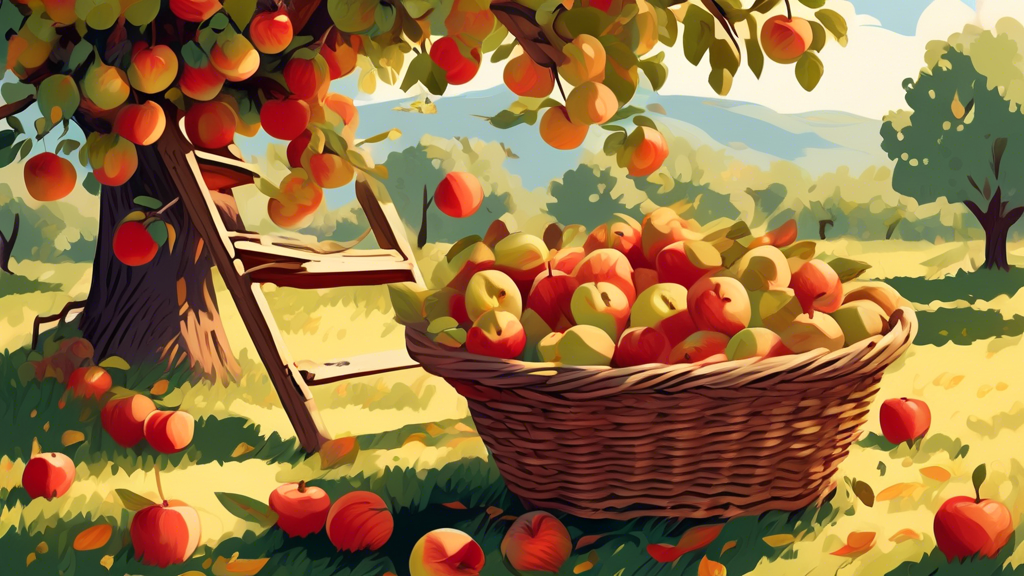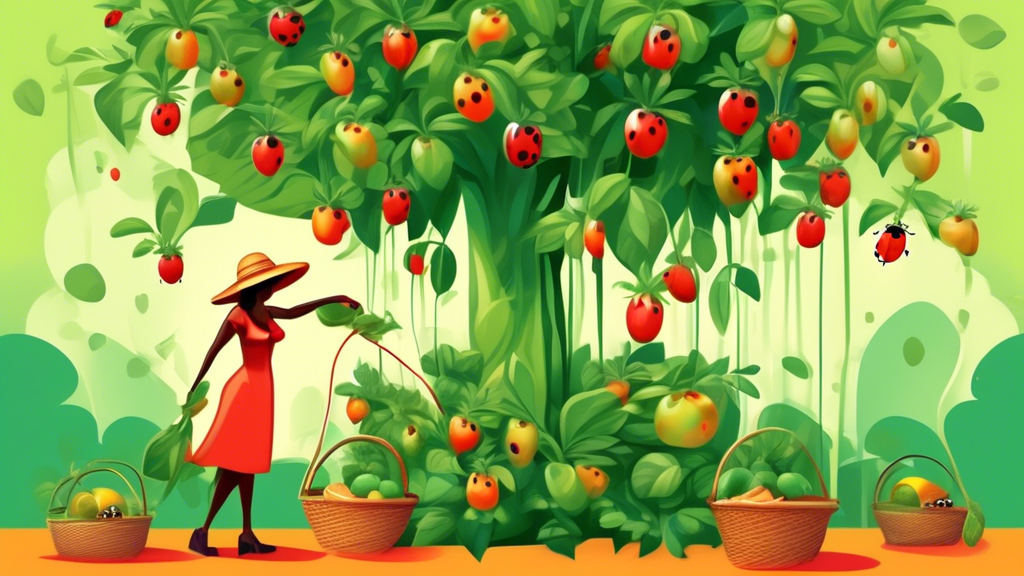
What is Companion Planting and Why Does it Work?
Companion planting is the strategic placement of different plant species near one another to achieve specific benefits, such as pest control, improved growth, and enhanced flavor. It’s a cornerstone of organic gardening that works by harnessing natural plant relationships.
The Core Principles: Beyond Simple Pest Control
While many gardeners know companion planting for pest management—like using strong-scented herbs to repel insects—its principles run deeper. It involves creating a mini-ecosystem where plants support each other through:
- Trap Cropping: Some plants lure pests away from more valuable crops.
- Habitat for Beneficials: Flowering herbs attract pollinators and predatory insects that eat common garden pests.
- Resource Sharing: Plants with different root depths can access nutrients and water from separate soil layers without competing.
The Unique Benefit: How Herbs Enhance Flavor in Their Neighbors
A fascinating and less-discussed aspect of companion planting is flavor enhancement. For example, planting basil near tomatoes doesn’t just repel tomato hornworms; many gardeners and chefs swear it actually improves the tomatoes’ flavor profile. The theory is that the aromatic oils from the basil can be absorbed by the tomato plants through the soil or air, leading to a sweeter, more complex fruit. This phenomenon isn’t fully understood scientifically, but the anecdotal evidence from generations of gardeners is compelling.
Top Companion Planting in Herb Gardens: Herbs That Grow Well Together
Creating a community of herbs that thrive together is the key to a productive and healthy garden. Here are some of the most effective pairings.
The Basil Brigade: Tomatoes, Peppers, and Oregano
Basil is a superstar companion. Its strong scent repels thrips, flies, and mosquitoes. Plant it near tomatoes and peppers to protect them and potentially boost their flavor. Oregano also thrives nearby, forming a fragrant, pest-resistant trio.
The Rosemary & Sage Alliance: Cabbage, Beans, and Carrots
Both rosemary and sage are powerful aromatic herbs that deter cabbage moths, bean beetles, and carrot flies. They love similar, well-drained soil conditions, making them perfect garden partners for these vegetables.
The Mint Family Warning: Contain Thyme, Rosemary, and Lavender Together
While mint is a useful herb, it’s notoriously invasive. However, other members of the mint family, like thyme, rosemary, and lavender, are well-behaved and make excellent companions. They all prefer full sun and drier, well-drained soil. Planting them together creates a beautiful, drought-tolerant, and fragrant section of your garden that attracts bees.
Dill’s Dynamic Partnerships: Cucumbers, Onions, and Lettuce
Dill is a magnet for beneficial insects like ladybugs and parasitic wasps. It’s a fantastic companion for cucumbers and lettuce. However, a unique tip is to plant it near onions, as it can help deter onion flies. Be cautious, as mature dill can inhibit the growth of carrots.
Chive Companions: Roses, Carrots, and Apple Trees
Chives are a gardener’s secret weapon. Their pungent smell helps deter aphids, a common pest for roses and apple trees. When planted near carrots, they can help mask the carrot’s scent from the destructive carrot fly.
| Herb | Good Companions | Benefits | Keep Away From |
|---|---|---|---|
| Basil | Tomatoes, Peppers, Oregano | Repels flies & mosquitoes; may improve flavor | Rue, Sage |
| Rosemary | Beans, Cabbage, Sage, Carrots | Deters bean beetles, cabbage moths | None significant |
| Mint | Cabbage, Tomatoes | Deters cabbage moths, aphids | Almost everything (plant in a container) |
| Dill | Cucumbers, Onions, Lettuce | Attracts beneficial insects | Carrots, Tomatoes |
| Chives | Carrots, Roses, Apple Trees | Deters aphids and carrot flies | Beans, Peas |
Common Herb Garden Pairings to Avoid
Just as some plants are great friends, others are fierce competitors. Knowing which herbs to keep apart can save you from stunted growth and disappointment.
Understanding Plant “Enemies”: Why Some Herbs Stunt Growth
Some plants release biochemicals (a phenomenon known as allelopathy) that can inhibit the germination or growth of nearby plants. Others simply have conflicting needs for water, nutrients, or light.
The Biggest Rivalries: Mint vs. Almost Everything, Fennel as a Bad Neighbor
Two of the worst neighbors in the herb garden are mint and fennel.
- Mint: Its aggressive, spreading roots will quickly overtake and choke out nearby plants like parsley or chamomile. Always plant mint in its own container.
- Fennel: Fennel is allelopathic to most garden plants, including herbs like cilantro and beans. It releases substances that can stunt their growth. It’s best grown in a separate, dedicated bed.
Designing Your Herb Garden Layout: A Practical Guide
Putting your companion planting knowledge into practice requires a thoughtful layout. Here’s how to design for success in any space.
Sample Layouts for Raised Beds, Containers, and In-Ground Gardens
Raised Bed (4×4 feet): Plant tall rosemary or lavender at the north end. In front, create a block of basil with tomato plants interspersed. Edge the south-facing side with low-growing thyme or oregano.
Container Garden: A large pot is perfect for a “pizza garden”: one tomato plant in the center, surrounded by basil and oregano. In a separate container, group rosemary, sage, and lavender.
In-Ground Row Garden: Plant rows of carrots with a row of chives on either side. Follow with a block of beans and then a row of rosemary to deter pests.
Pro Tip: Utilize Vertical Space with Tall and Sprawling Herbs
Don’t just think horizontally. Use tall herbs like dill and fennel (in their isolated spot) as a backdrop. Allow sprawling herbs like oregano and thyme to cascade over the edges of raised beds or containers, where they act as a living mulch to suppress weeds.
Frequently Asked Questions About Companion Planting in Herb Gardens
Can I plant multiple companion herbs together in one container?
Yes, absolutely! Container gardening is an excellent way to practice companion planting. Just ensure the herbs have similar water and sunlight needs. A classic combination is rosemary, sage, and thyme, as they all prefer drier soil.
Does companion planting eliminate the need for pesticides completely?
While companion planting significantly reduces pest problems, it’s not a silver bullet. It should be part of an integrated pest management (IPM) strategy that includes healthy soil, crop rotation, and manual removal of pests. It can, however, drastically reduce or even eliminate the need for chemical pesticides.
What is the #1 most versatile companion herb for a beginner?
Basil is the top choice. It’s easy to grow, benefits popular vegetables like tomatoes and peppers, repels a variety of pests, and is a culinary staple.
Are there any herbs that should always be planted alone?
Yes. Mint is the primary candidate due to its invasive nature. Fennel is another, as it inhibits the growth of most other plants and is best grown in isolation.
Beyond Pest Control: The Lesser-Known Benefits of Companion Planting
The advantages of a thoughtfully planned herb garden extend far beyond keeping bugs at bay.
The Soil Health Secret: How Deep-Rooted Herbs like Comfrey Bring Nutrients to the Surface
Some herbs, like comfrey and borage, are “dynamic accumulators.” They have deep taproots that mine the subsoil for nutrients like potassium, calcium, and magnesium that are out of reach for shallow-rooted plants. When the leaves of these herbs are cut and dropped as mulch, they decompose and release these nutrients into the topsoil, effectively feeding their neighbors for free.
Creating a “Living Mulch” with Sprawling Herbs like Oregano to Suppress Weeds
Low-growing, mat-forming herbs like oregano, thyme, and chamomile can be planted as a living ground cover. They spread to form a dense carpet that shades the soil, conserves moisture, and prevents weed seeds from germinating. This saves you time on weeding and watering while adding beauty and function to your garden.






